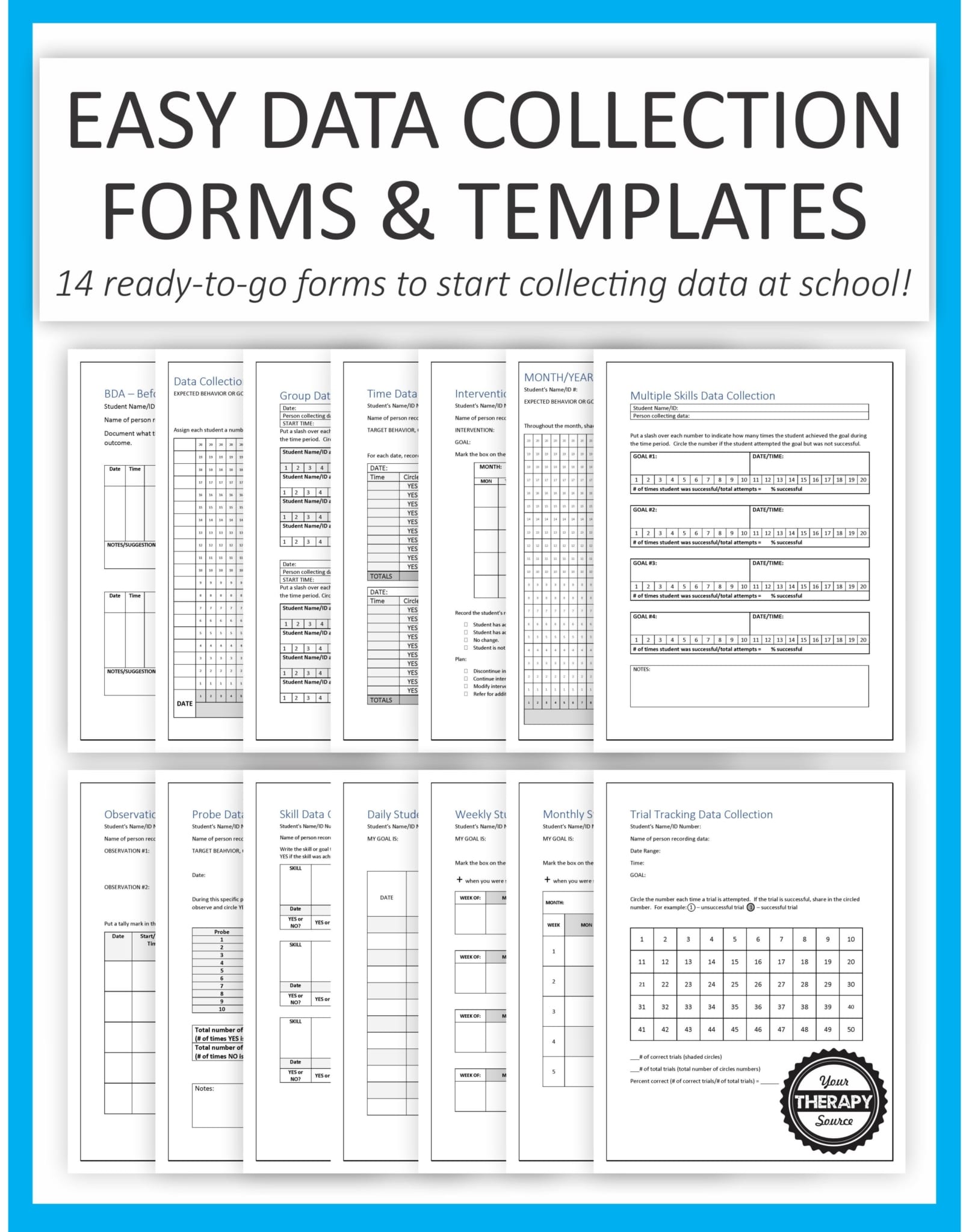IEP Data Collection for Young Children in the Special Education Classroom
Efficient IEP data collection is critical for tracking progress and ensuring young children in special education classrooms receive the best support. However, challenges like time constraints and unclear systems often make this task daunting. By adopting a team-based approach, educators and related service providers can streamline this process, saving time and improving outcomes. Here’s how to address common hurdles and create a plan that works for IEP data collection for young children.

WHY DATA COLLECTION CAN BE HARD IN EARLY CHILDHOOD CLASSROOMS
IEP data collection in early childhood classrooms is essential but often challenging. These challenges can lead to underutilization of data, missed opportunities for informed decision-making, and less effective instructional adjustments. Teachers, related service professionals and paraprofessionals face obstacles such as:
- Time Constraints: Balancing direct instruction with data collection can be overwhelming.
- Unclear Systems: Many educators struggle with inconsistent or poorly defined methods for tracking progress.
- Training Gaps: Paraprofessionals often lack adequate training in data collection techniques.
- Disruptions: Classroom dynamics, like managing behaviors, can interrupt the data collection process.
- Logistical Issues: Organizing and maintaining data collection materials for multiple students is cumbersome.

Data Collection for Special Education Templates – EASY
BENEFITS OF A TEAM-BASED APPROACH TO IEP DATA COLLECTION
A team-based approach addresses these challenges by distributing responsibilities and fostering collaboration. By involving the entire team, the classroom operates more smoothly, and children receive the support they need to succeed. Key benefits include:
- Shared Responsibilities: Teachers, paraprofessionals, and therapists can collaborate to lighten the workload.
- Consistency: Clear roles and expectations ensure data is collected systematically.
- Improved Accuracy: Training and ongoing feedback enhance the quality of data collected.
- Efficient Problem-Solving: Regular team discussions identify and resolve issues promptly.
- Better Decision-Making: Comprehensive data allows for tailored interventions and supports.
ACTION PLAN TO IMPROVE YOUR IEP DATA COLLECTION
Here’s a step-by-step guide to implementing a team-based approach:
- Review Roles and Train the Team:
- Provide professional development for teachers, related service professionals, and paraprofessionals.
- Clarify roles, responsibilities, and the importance of accurate data collection.
- Select a System:
- Use binders for organizing IEP objectives.
- Explore tools like data cards or technology-based apps.
- Streamline Data Sharing:
- Create one-page summaries of each child’s IEP objectives for quick reference.
- Ensure data systems are accessible but maintain confidentiality.
- Choose the Right Methods:
- Match data collection methods (e.g., event recording, checklists) to specific objectives.
- Model and practice these methods with the team.
- Develop a Schedule:
- Use matrices to align objectives with classroom activities and routines.
- Plan data collection times to ensure consistency.
- Assign Responsibilities:
- Delegate tasks based on strengths and availability.
- Establish regular team check-ins to review progress.
- Analyze and Adjust:
- Graph collected data to visualize progress.
- Use findings to refine instructional strategies and update IEPs as needed.
Data Tracking Forms for School Based Occupational and Physical Therapy
MORE RESOURCES
- Data Collection for Special Education Templates
- Data Collection for IEP Goals
- Data-Driven Decision-Making Process
- 5 Easy Data Collection Ideas to Try Right Now
By implementing these strategies, educators and service providers can overcome common challenges and create a more efficient, team-oriented data collection system. This ensures children’s progress is accurately tracked and supported with data-driven decisions, benefiting the entire classroom community.
REFERENCE
Kim, C. K., & Hardy, J. K. (2024). A Team-Based Approach to IEP Data Collection in the Early Childhood Special Education Classroom. Young Exceptional Children, 10962506241276875.



